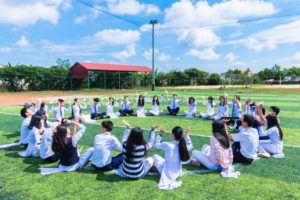
If you are thinking about ways to build community in your classroom this year, consider implementing class meetings or circles in your daily routine!
Class meetings or classroom circles are sometimes called morning meetings, but they can actually be held any time throughout the school day.
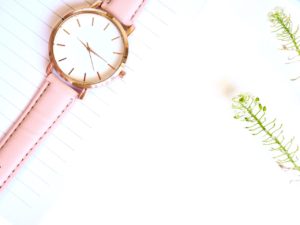


Teachers complain that there is never enough time in the school day (which is true). So it’s easy to think that class meetings or circles are just some “woo-woo” thing we just do not have time to do. But what I have seen is that the investment of time in these classroom routines pays off in more time for learning throughout the year. When students feel “heard” and supported by both their teacher and their classmates, many problems and issues can be averted. Give it a try!
I’ll explain how I use circles in my class and give some tips for how to get started. If you want more in-depth information about the research behind these practices, I suggest reading anything from Responsive Classroom or check out the International Institute for Restorative Practices website.
There is a lot of research out there about the importance of rituals and routines in classrooms. Here is a brief article from Edutopia with more information about this research. The main point is that when classroom rituals, such as meetings/circles, become a routine part of the school day, students have a feeling of security and safety in the classroom.
I love Responsive Classroom’s work. I highly recommend any of their books, but here are a few that explain classroom rituals and meetings:
*The First Six Weeks of School
*80 Morning Meeting Ideas for Grades K-2
*80 Morning Meeting Ideas for Grades 3-6
As I mentioned before, another important reason to do circles is that they are a proactive way to avoid negative discipline situations. When students and teachers are “attached” to each other, there will be fewer classroom disruptions. Circles can be used to solve classroom problems and to help students understand the impact of their actions on other people.
But to begin the classroom routine of circles, keep it fun and keep it positive. Just because something is a routine does not mean it has to be boring! There are lots of ways to change up what you do in class circles. Problem-solving can occur later when needed.



HOW TO INTRODUCE CIRCLES & TEACH THE ROUTINE
I adapted the lessons below from this article.
Day 1:
*Gather students in a circle in the meeting area of your class. (If you teach younger students, you might have them sit in a circle on the carpet. If your students are older, you might have them bring a chair and arrange the chairs in a circle.)
*Why a circle? Explain that the purpose is so that all of us can hear and see each other.
*Explain that at this time of the day, we will gather in a circle. You might call it a meeting or just call it a circle. Tell your students that you will do different things in the circle throughout the year, but that the goal is to help us know and understand each other better, and to build friendships within our class. This is NOT a time when we will just sit and listen to the teacher. This is a time when we will talk and share with each other.
*At this point, you might do some fun get-to-know-you ice-breaker activity. Jennifer Gonzalez at Cult of Pedagogy has some great ideas here.



Other fun ice-breakers:
*Have students talk to the person next to them on one side (tell them which side). Learn their name and one thing about them that they want the class to know. Then go around the circle (what we call a “sequential” circle since it involves every person sharing and going in order) and have each student introduce their partner. You could also then reverse the process and have students talk to the person on their other side and introduce them in the same way.
*Pass around a roll of toilet paper and have students take “as many pieces as they need”. Then, for each piece of toilet paper, they have to share one fact about themselves.
At this point, it might be good to get them up and moving.




You could use Jennifer Gonzalez’s concentric circle ice-breaker, or try one of these:
*snake activity – everyone stands in the circle. Choose a student to start, or you could start and model this activity. Person #1 steps into the circle, turns to their left and faces the person beside them. They then give Person #2 a greeting (saying their name) and a “safe gesture” (fist bump, high five, handshake). Person #1 then moves to the next person in the circle and does the same until they have greeted/gestured to each person in the circle. When Person #1 gets back to their place in the circle, Person #2 steps into the circle and does the same thing. Continue until the whole class “snakes” through the circle to greet each other.
*human knot – everyone stands in a circle. Then reach across the circle and grab the hands of two other people. Next, try to unravel the knot without letting go of hands!
*hula hoop body pass – stand in a circle and hold hands. Put a hula hoop on the arm of one student. Their task is to try to pass it through the arms to the next person. Everybody does the same without dropping hands.
End the circle for today with positive reinforcement. You want everyone to have positive feelings about circles and what they will be like this year.
Day 2:
Gather together in a circle again. Have students remind the class of why we sit in a circle.
Today, introduce the use of a “talking tool.” This could be any object — a small ball, a rain stick, a stuffed animal. Explain that when someone is holding the talking tool, no one else is talking (no side conversations, blurting out comments or questions, etc.).
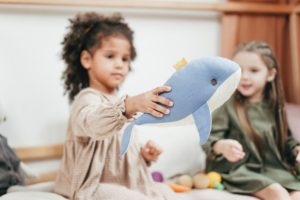


Then do a sequential circle with some non-threatening topic to share such as something that was fun for you this summer or something you are looking forward to this school year. When you introduce these topics, give 30 seconds of think time before asking a student to share and start the circle.
Remind students to keep it short and limit to one sentence. (Otherwise, it can drag on as some students monopolize the time.)
Keep the circle time short and positive!
Day 3:
Gather together in a circle with the talking tool. Review the use of the talking tool with sequential circle using a non-threatening topic such as one of the topics from day 2 (giving 30 seconds of think time first). Other topics might be “the best book I read this summer or last year” or “a good movie I enjoyed”.
Today, start talking about what we need in our classroom for everyone to feel safe and to do their best work. This circle will be a non-sequential circle, in that students may raise their hands to speak. You will toss the talking tool to them. (Another term for this is “popcorn”.) They can then toss the talking tool to another student with a raised hand.
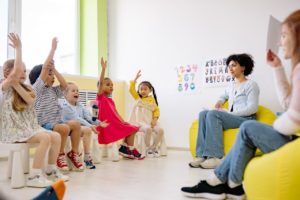


While students share ideas, you could make a list of their ideas on chart paper.
When everyone has shared, try to group the ideas together (with the class’s help) and come up with four or five “norms” or agreements that we will follow in our class this year. When you’re finished, thank the students for their participation and thinking in this process.
End with a another sequential circle on a non-threatening topic such as “what is your favorite subject” or “what is your favorite special”.
(At some later time, make a fresh copy of the norms. You might even want to have your students sign them and you sign them as well.)
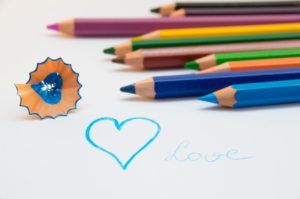


Day 4:
Gather in a circle and review the norms. Choose a norm to focus on for today’s circle. Doing this helps provide practice with the norm as needed while meeting in a circle.
Start with a sequential circle and 30 seconds of think time to share something like “what is something you learned this week?” or “what game or activity was your favorite?”.
Remind students of the norms, reinforce good things you see and hear, and redirect any less positive behavior as needed.
End the circle in a positive way by reinforcing the good from the circle today.
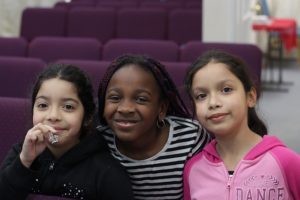


Day 5:
Use the usual procedures, but today you will introduce community meeting.
Suggestions for sequential circle warmup: what is something fun you did over the weekend or what is your favorite hobby?
Review norms. Choose one to focus on during today’s circle.
Explain that the purpose of a community circle is to discuss some issue within the classroom that we want to change in some way. Examples might be:
*how to change seating arrangements
*how to set up classroom jobs
*changing displays in the classroom
*sharing appreciation with one another
*discuss questions or concerns about a classroom situation that has recently happened (sometimes called a “responsive” circle)
*talk about procedures for an upcoming event, like a field trip (sometimes called a “proactive” circle).



Choose something to discuss today. If several students have ideas to share, use a sequential circle (allowing students to “pass” if they don’t have something to add) or you could use a non-sequential (popcorn) circle.
End the circle on a positive note by thanking students for their ideas and participation and getting their thumbs up/thumbs down feedback on how they think they did with the norm today.



Day 6:
Use the usual procedures, but today you will introduce academic circles.
When you use an academic circle, you are teaching content but allowing students to reflect on and discuss ideas. You will need to think about discussion questions in advance so that students will discuss whatever learning goal you have for the lesson. Obviously, other discussion could happen as well, but you still want to keep them on track to meet the learning goal for your lesson.
Choose a subject for the circle. You will do whatever lesson you would have done with them at their seats, but you’re in a circle format.
Review norms.
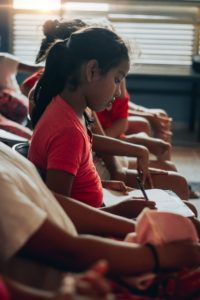


Some examples of academic circle topics and activities:
*Introduce a new unit of study in math, science, or social studies by letting students share what they already know and what they wonder about the topic. Use a sequential circle and make a T-chart of “What We Know” and “What We Wonder”.
*Introduce a new unit of study by just asking for what they know about a topic. Use a sequential circle and allow students to pass if they’re not sure of what they already know.
*Get some sort of class practice or worksheet started together while you’re in the circle. You might need to allow for pencils and clipboards. Have a student read the directions aloud. Allow for questions and allow for students to get started by talking to someone beside them.
*Use a question to stimulate thinking at the beginning of a unit and allow students to discuss. This works well for social studies topics.
*Use a circle for share/reflection time at the end of a lesson. Allow students to discuss what they practiced, what they learned, what was challenging, what they are proud about, etc.
End by reflecting on the use of the norm for today’s circle and thank students for their participation.



Day 7:
Use the usual procedures, but today you will introduce identities, diversity and equity and how that impacts learning.
Form a circle and review norms. Choose one norm to focus on for today.
Start by doing a sequential circle and have students share one thing about themselves or about their family.
Explain that circles will help us learn about each other this year. Learning about who we are is important because learning about who we are impacts how we learn and how we interact with other people. We also build our understanding of the world by hearing others’ perspectives.



There are several great lessons in Sara K. Ahmed’s book Being the Change, but one of my favorite lessons is making identity maps. For this circle, I might make my own identity map in front of students. After I model making my own, I send students back to their seats with paper and markers to make their own identity maps. Then we will return to the circle to share them.
When we share maps, I ask students to share one fact that many people might not know about you. What is one fact that you think might surprise people? What is one fact that you usually do not share much with other people? Why? (If some students are not comfortable sharing their map at this point, don’t press it. Just allow for volunteers.)
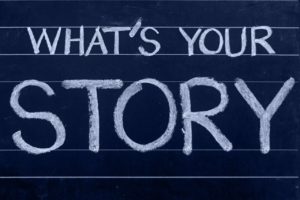


Write the following terms on the board:
Identity
Diversity
Equity
Ethnicity
Nationality
Ask students what they know about these terms. Explain that these terms will be discussed all year as we get to know each other and celebrate our diversity throughout the year. Tell students that this helps build a community of compassion and understanding in the classroom.
You might want to explain the difference between “equity” and “equality”. Equity = everyone getting what they need to be successful. Equality = everyone getting the same thing. This article from the Education Trust explains more.
End the circle by asking students to share ways that the class can celebrate diversity and different identities.
You might want to display the identity maps in your classroom. You also might want to put them away for now and revisit them later in the year to see if students have additional words to add.




Day 8:
Use the usual procedures, but today you will use the circle for a restorative scenario..
Form a circle and review norms. Choose one norm to focus on for today.
Discuss with students how circles are not just used for community building or academic reasons. Circles will also be used to resolve situations that may come up in the classroom throughout the year. Have students quickly share some conflict situations that might occur (conflicts at recess, disagreements between students in the classroom, supplies or technology not being used appropriately, etc.)
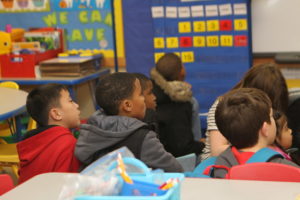


Create some scenario that you have seen happen in the past or one that students have just suggested. Pose the scenario and give the students think time. Discuss what to do for the scenario. First go around in a sequential circle and have students discuss their feelings about the scenario. Then have students popcorn some solutions for how the problem could be solved. Validate what students share. You might have students talk to each other and add on to each other’s thoughts.
Remind students that they will be working on restorative type circles throughout the year as problems/concerns arise. They need to be respectful of each other during this time as they work through problems as a class.
End the circle by thanking students for their participation and thoughtful input.



WHAT ARE SOME OTHER CIRCLE TOPIC POSSIBILITIES?
Here are some other circle topics that my fifth graders have loved.
1 – Brags & drags about the weekend. Do a sequential circle where everyone can share one brag and one drag about their weekend. (Emphasis on “one”!)
2 – Roses & thorns about the school day. This can be sequential or non-sequential. Students share one good thing that happened for them during the day (a “rose”) and one not-so-good thing that happened or something that was difficult for them today (a “thorn”).
3 – Would You Rather questions. Rachel Lynette at Minds in Bloom has some great questions for different times of the school year.
4 – Three A’s. This works best as a non-sequential circle. Students can share an Appreciation of someone (thanking someone in the class for something), an Apology (they can apologize to someone publicly, but don’t have to say for what), and an A-Ha (something they caught on to or learned today). (I got the idea from this post on Edutopia.)
5 – A great circle to do right before a break or at the end of a quarter – have students stand in a circle. This will be sequential. The first student will talk about the person to their right. They will introduce the person by saying, “This is ______. What I admire most about _______ is _______.” When everyone has shared, you then reverse the circle. Now the first student will talk about the person on their left by saying “One word I think of when I look at _______ is ________.”.
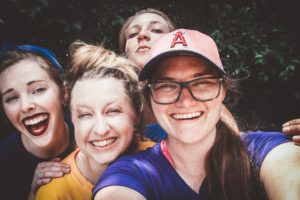


The first time I did this circle I was a little worried that students would be silly or say inappropriate things. So of course I had to remind them of our norms. But I had nothing to worry about. They loved this activity, took it very seriously, and said the most amazing things about each other. It is a powerful way to validate every student’s importance and value to the community.
I hope you will try some of these ideas in your classroom this year. I would love to hear your ideas or suggestions for more circle topics!
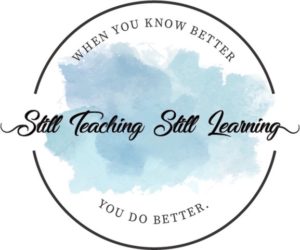
Regardless of whole school initiatives, teachers can implement their own restorative practices at any time. Simply gather your students in a circle and give them a topic to discuss. The goal is to get students to open up and recognize that they have experiences in common with their classmates. These conversations should be undertaken in small chunks, in specific time set aside to build the classroom community.